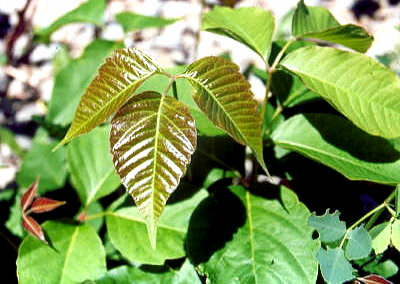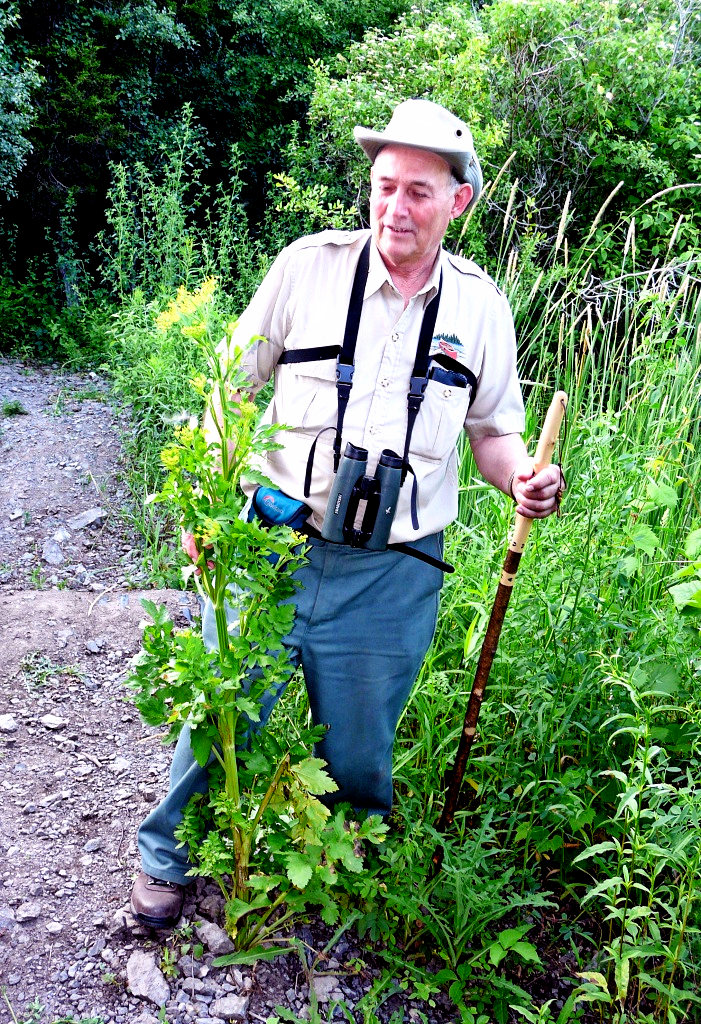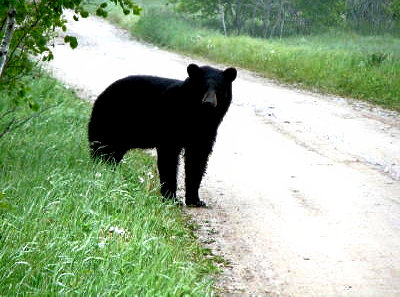Prince Edward County, Ontario, Canada
Watch For Dangers When Out Foraging
When I used to work for a conservation authority in Picton, one of my jobs in early spring was to visit all the local schools and warn the kids of the dangers of playing too closely to fast flowing water and flooded areas. One point always emphasized was that kids should always leave word with their parents as to where they would be going, and when they would be back.
Today, as a professional hike leader, I offer the same words of safety to those on our hikes, especially if they are hiking by themselves. Hiking gear today routinely includes a first aid kit, cell phone, GPS, two-way radios, and a safety whistle. Many of these items should not be overlooked either when we are foraging, especially if we are by ourselves. There are many dangers out there, not the least of which is poison ivy.

The difficulty in recognizing poison ivy is not all that hard to understand, given that many similar plants have three leaves, including wild raspberries and a host of others, and there seems to be no hard and fast rule about recognizing it. Like recognizing a distant pileated woodpecker in flight when it is but a mere silhouette as it bounds from one forest to the next, the more often you see it, the easier it becomes to recognize, even if it is nothing but an outline. Poison ivy leaves can be serrated or they can be smooth, green, or red, depending on the season, large or small, and the plant can be low and creeping, or cleverly disguised as either a woody shrub or a climbing vine. One sure way is to check out the tip of the leaf which will always have a long sharp tip.
Prince Edward County foragers, and for the most part, anyone poking around in the entire Quinte area, need not be concerned about poison oak. It simply does not grow here. It is the western version of poison ivy, different only in the rounded tips of the leaves. However, the terms are often interchanged with reckless abandon, adding to the confusion. And we don’t have poison sumac here either.
For a long time, we thought we thought we were pretty lucky in having only one plant that was poisonous to the touch. Now there is a new plant in our midst that can result in a severe reaction if contacted – wild parsnip. It reaches its peak in late July and early August, but only in recent years have we discovered that under the right conditions one can get a severe rash from touching it, Strangely, the root is quite edible. It grows high, often in small colonies, the hollow stems and leaves reminding us of celery, and its yellow, compound flower umbels and distinctive odour. The plant contains furocoumarins which can cause severe skin dermatitis, when activated by sunlight.

It is also advisable not to get too carried away when searching for wild food for the table. Many plants such as baneberry, death camas (looks like wild onion), Jimsonweed and a host of others, including some mushrooms, are quite poisonous. Others, only at certain stages. May-apple for example, produces a fruit that is quite poisonous in its early stages of development, but completely harmless and very tasty when fully ripe. If you are not familiar with poisonous plants, invest in a good edible field guide that will point out the ones to watch out for during your foraging experiences.
When foraging, we may be so consumed by the activity that we often neglect to keep an eye out for what’s around us. We tend to work away quietly, making little noise, and what happens if you should meet up with a bear, face to face? Our survival instincts tell us to run! However, running will only activate a pursuit mode in a bear, if it is inclined to accept the challenge. And you cannot outrun a bear. Stand your ground, make yourself appear larger by stretching out your arms, and back away slowly if the bear appears to be approaching you. Normally, a bear is more than happy to get out of your way upon seeing you, before you even have a chance to react. That is the ideal scenario and one which usually predominates. But, if a bear with cubs regards you as a threat, or you come across a spot where both of you have been foraging, it may be time for the bear spray if the bear charges. Resist the urge to run, and use the spray only when the bear is close enough, approximately 25 feet.

Mostly, before you enter a foraging area, be aware of what might be out there, by learning to correctly identify your plants, and keeping an eye on any animals that might be around – and make a little noise as you forage, either by singing or talking to yourself or whistling. If bears are in the area, usually they are more than happy to avoid you.
Good foraging this month, and be aware of the dangers before you set out.